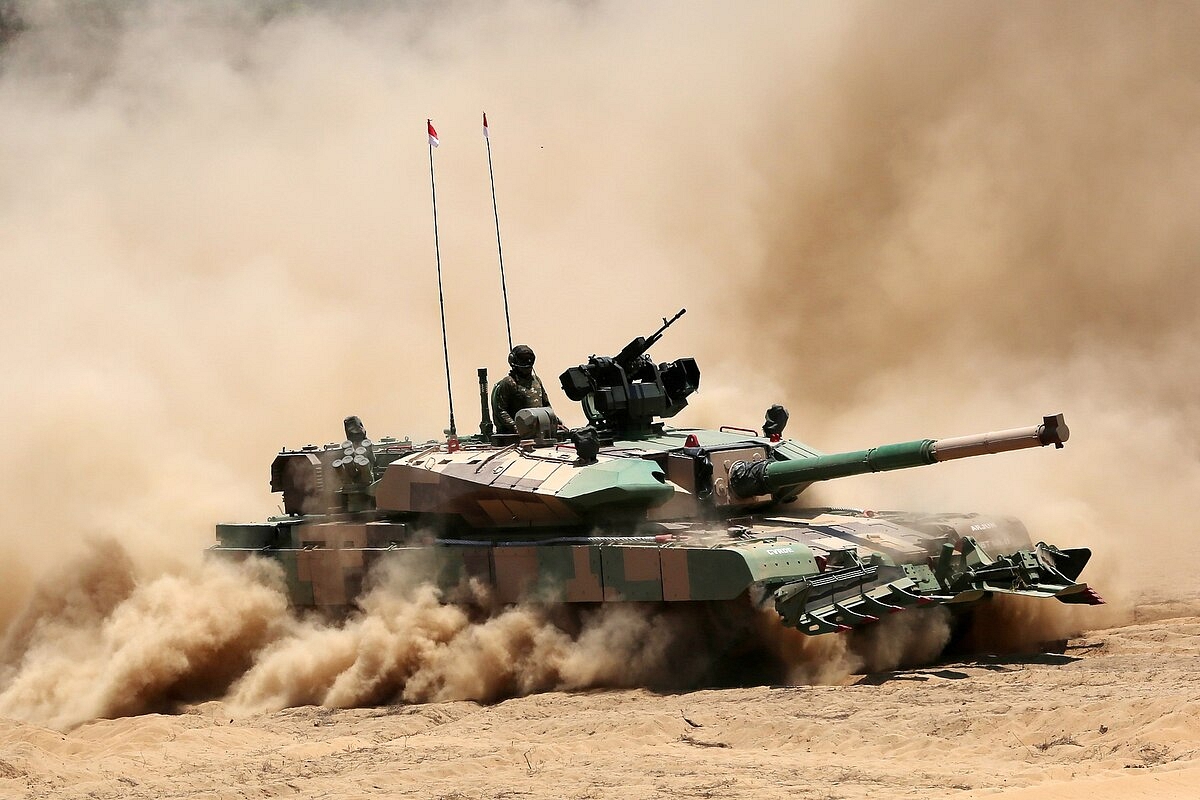Defence
Arjun Tank Project Could Suffer Another Devastating Delay, Thanks To Army's Decades-Long Reluctance To Back It

Indian Army's indigenous Arjun Mk-1A tank.
The Indian Army's reluctance to fully commit to the DRDO-designed Arjun tank has once again thrown a spanner in the works for India's aspirations of having a homegrown main battle tank (MBT).
This hesitation to place substantial orders for the Arjun tank has led to supply chain issues with the production line of the German-made 1400 HP MTU MB 838 Ka-501 V10 diesel-engine, powering the Arjun Mk-1 tank, shutting down.
Its engine manufacturer, MTU, has indicated that it will take another four years to get the production line back up. This means more delays for the already delayed Arjun tank programme — a situation where the blame rests squarely on the shoulders of the army.
Moreover, the stoppage of production of the MTU engine will adversely affect the availability of spare parts for the existing engines in use with the Arjun Mk-1 tanks, exacerbating issues that have plagued the fleet of 124 Arjun tanks for quite some time.
In 2015, it was reported that almost 75 per cent of the fleet was grounded due to a lack of spare parts for the engine, transmission, and issues in the thermal and targeting systems of the tank — all stemming from challenges in importing foreign components.
This starkly highlights the complications arising from ordering such small quantities.
However, the effect of the German engine going out of production will be limited as Heavy Vehicles Factory (HVF) Avadi just two days ago (13 February) demonstrated the ability to maintain and repair the existing 1400 HP engine, entirely in India without any foreign help.
The army has repeatedly given step-motherly treatment to the DRDO-designed tank, favouring the Russian T-90 tank, which the Arjun tank outperformed, fair and square, in comparative trials conducted in Rajasthan in 2010.
Arjun bested the Russian T-90 MBT in every parameter — from gunnery to mobility in cross-country terrain. And, this is setting aside the relaxation given to T-90 in multiple parameters.
Despite Arjun's superior performance, the army continued to obstruct its procurement, pointing out one deficiency after another.
The tank's hefty weight of about 62.5 tonnes was cited as the official reason for not purchasing it in large quantities, arguing that its weight would hinder its ability to navigate roads and bridges near the Pakistan border, on top of asking for 83 tweaks to make it battle-ready, including 15 major ones.
Ironically, the requested modifications led to an increase in weight to more than 68 tonnes, 6 tonnes more than before.
Even after DRDO unveiled the latest model in 2018, the Arjun Mk-1A, with the suggested modifications, the army dragged its feet for another three years before placing an order, citing concerns over high import content, spare parts scarcity, and the lack of suitable ammunition.
It was only in 2021, when the army, under immense pressure from the Ministry of Defence (MoD), relented and ordered 118 Arjun Mk-1A tanks worth Rs 7,523 crore, with deliveries set to begin in 2024.
Now, with the engine production ceasing, more delays are anticipated.
But it's not all doom and gloom.
The DRDO is testing its own in-house designed 1500 HP DATRAN diesel engine. Its first prototype entered testing in 2023, and is anticipated to be lighter and more powerful than the German 1400 HP engine used by the Arjun Mk-1.
Kicked off in 2010, a more powerful and uprated 1800 HP variant of the engine will also power the future ready combat vehicle — the next generation tank weighing around 50 tonnes with induction scheduled in the next decade.
Support Swarajya's 50 Ground Reports Project & Sponsor A Story
Every general election Swarajya does a 50 ground reports project.
Aimed only at serious readers and those who appreciate the nuances of political undercurrents, the project provides a sense of India's electoral landscape. As you know, these reports are produced after considerable investment of travel, time and effort on the ground.
This time too we've kicked off the project in style and have covered over 30 constituencies already. If you're someone who appreciates such work and have enjoyed our coverage please consider sponsoring a ground report for just Rs 2999 to Rs 19,999 - it goes a long way in helping us produce more quality reportage.
You can also back this project by becoming a subscriber for as little as Rs 999 - so do click on this links and choose a plan that suits you and back us.
Click below to contribute.
Latest